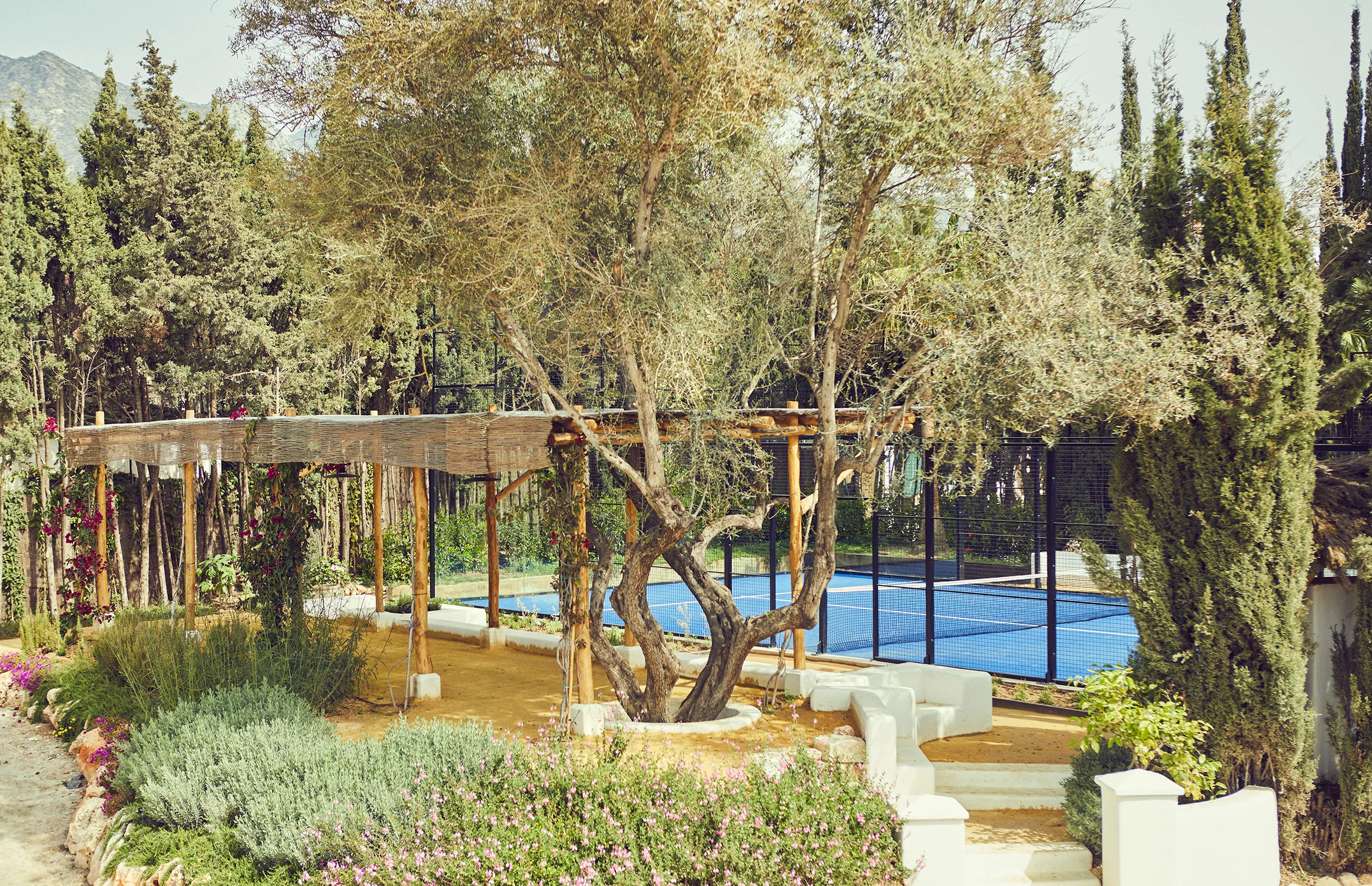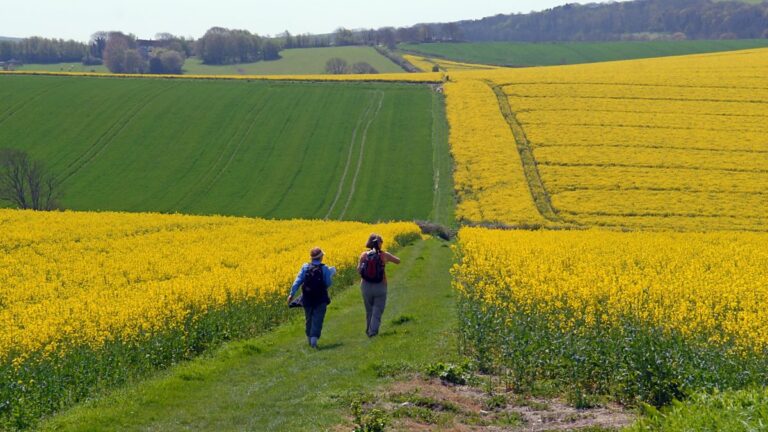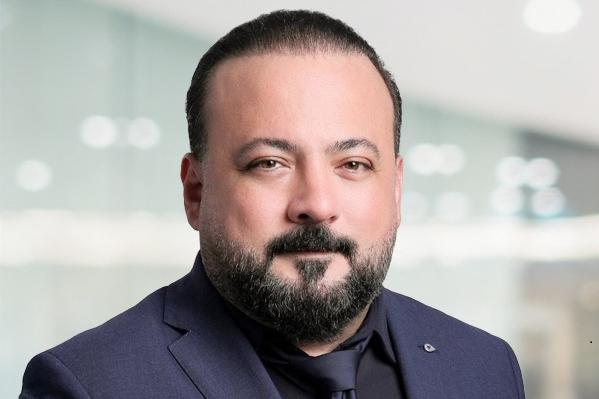

It’s a sunny morning in August, and I’m on my way to my first padel lesson. It’s a sport that I’ve heard of, but never played. A tall, charming Italian instructor named Jacopo Prato is waiting on one of Ireland’s Adare Manor hotel’s two custom-built indoor padel courts, ready to explain what exactly padel entails. And why I should care.
I soon learn that padel is a combination of tennis and squash, but easier because it’s played on a smaller court and serving is underhand, and it tends to be a slower speed game than tennis. The racket is similar to the one used for pickleball, and the scoring is identical to tennis; padel is played in games and sets (best of three sets), so a match can last around an hour. Frankly, it sounds basic—even boring. But as it turns out, an hour of padel is an undeniable hour of fun, even if Prato is a significantly more skilled player than I am.
My immediate obsession with padel, which has only increased since my first lesson, isn’t unusual. Padel is the fastest-growing racket sport in the world, and it’s so compelling that many hotels are making it a standard amenity.
“One thing padel as a game has gotten right is that it’s a new game to almost everybody,” Brendan O’Connor, general manager of Adare Manor, a member of Leading Hotels of the World, tells Observer. “So there’s no establishment in the sport. There’s no elitism. Most padel facilities allow you to just pick up a racket when you come in, whereas tennis tends to be a little bit more elite. Padel is really accessible.”


Adare Manor began considering the addition of padel to its offerings in 2018. Although padel courts have been in European hotels since the 1970s, when one debuted at Spain’s Marbella Club Hotel, Adare was a relatively early adopter in the current craze. The hotel was looking to build an indoor leisure space to combat the constant rainy days in County Limerick, and Adare’s owner, J.P. McManus, was familiar with the sport from playing at Sandy Lane in Barbados.
Adare Manor’s Padel Club debuted in May 2021, featuring two indoor padel courts, a gym, an indoor pool and a golf simulator. O’Connor says that cost wasn’t a factor in adding padel—the hotel just wanted to offer guests something they would enjoy.
“We didn’t have market research to tell us this was the next big thing,” O’Connor says. “Anecdotally, we knew it was the fastest-growing sport in the world, but it was still very much in the Latin, Spanish and Portuguese countries. We’re so glad we did it because today, it’s a very accepted racket sport. We were the first ones in Ireland to do an indoor [padel] facility.”
At first, Adare Manor’s visitors weren’t totally convinced. “Over the first three years we had it, there was zero interest level, then a moderate level of interest,” O’Connor says. “Now there are guests coming and they’re bringing their own padel equipment. It’s gone mainstream.”
Hotel guests can rent a court by the hour (€110 for up to four people, including equipment and balls) or take a lesson (€195 for up to four people). The head instructor, Mark Beckett, leads a team of three instructors, with three more being trained. “Once someone has one or two lessons, they really get hooked,” O’Connor adds.
Indeed, padel is exploding around the world, both at padel clubs and in hotel leisure facilities. The number of global courts has multiplied fivefold since 2016, according to a 2025 report by Playtomic. It is especially popular around Europe, particularly in the U.K., Croatia and Ireland, but it has also picked up fans in Tunisia, Morocco and Malaysia.
The sport emerged in 1969 in Mexico, and slowly moved south to Argentina, before making its way over to Spain. “It’s almost the national sport of Spain and Argentina, second to soccer,” explains Matt Mistri, a London-based padel coach. “And then it slowly went into France, Italy and the U.K. over the past several years.”
For many, the primary appeal of padel is its social aspect. It requires four players, and the court is compact, which makes it easier to chat and get to know people while you play. It also involves less running than tennis, making it more accessible to older players or those who are less athletic. “With tennis, you see one person from really far away and you can’t talk to each other,” Mistri says. “You can’t really laugh together. With padel, it’s a hangout. The club where I coach has 4,000 people in a WhatsApp group where you can say, ‘Does anyone want to play padel at 7 a.m. on a Sunday morning?’ And immediately people will say, ‘Yes.’”


Although the U.S. still tends to prefer pickleball, padel is starting to gain traction in places like New York, Florida and California. Padel club Padel Haus has opened in New York City, Nashville, Atlanta and Denver, and Reserve Padel operates outdoor courts at Hudson Yards in NYC. The Ritz-Carlton in Key Biscayne has three courts, while the Caribe Royale Orlando has two. It’s also spreading west: The Parker Palm Springs unveiled two outdoor padel courts on the property in September. The hotel removed two of its red clay tennis courts to make room for padel, in a move that is happening at properties and clubs around the world. Similarly to Adare Manor, Parker Palm Springs (also a LHW) also says that cost wasn’t a factor, though it’s worth noting that padel courts are slightly cheaper to install than tennis courts, and take up less space.
“In everything we do, we look for longevity, so when we put it in place, it’s going to be enjoyed forever,” says Brandon McCurley, managing director of The Parker Palm Springs. “Our guests are looking for new experiences. They’re well-traveled, so there’s definitely an awareness already within the clientele. Padel was perfect because it felt like an investment that could complement the tennis and all the other activities that we have on property. Hopefully, it becomes a trend, but we’re more thinking about its longevity and its uniqueness and whether it will resonate with our guests.”
McCurley wants the courts to feel like a “social hub,” where you can order food and drinks—a sensibility that’s aided by the fact that booking the court is free for guests. The hotel also plans to hold tournaments, and McCurley is trying to source vintage bleachers for spectators. Instead of being a one-off place where guests go for an hour, the courts are intended to blend into the experience of The Parker, like the pool or the bar. “They are terracotta to match the tennis courts, and it’s beautifully done,” McCurley notes. “And we always include Jonathan Adler in anything we do from a design perspective at the hotel.”
Numerous other luxury hotels around the world have converted existing tennis courts into padel courts or debuted new courts to meet the demand. In Austria, Stanglwirt opened an indoor padel court inside its tennis club, accessible to both hotel guests and non-guests. In England, Soho Farmhouse announced the addition of three indoor padel courts alongside its refurbished tennis courts, and in August, the members-only property hosted their debut Soho Padel Club Cup. In the Scottish Highlands, Gleneagles added padel to its Gleneagles Sporting Club, with three courts. There are even padel vacation companies, like Padel Travel X, which send groups of travelers to play padel and take lessons in a sunny locale for several days.


Some hotels have been on the trend longer than others, but almost all have seen a massive uptick in interest in the past few years–even if this might just be another fad, like pickleball in the U.S. Beaverbrook, an English country hotel in Surrey, has had its outdoor court since 2018, along with a pickleball court. Jorge De Jesus, general manager at Beaverbrook, estimates that the padel court is typically at 80 or 90 percent occupancy. “It is incredibly popular, some days from as early as 7 a.m. and fully booked throughout the day,” he says. “We have a huge demand for padel lessons, too, so people are actually getting quite serious about playing padel.”
A one-hour court session at Beaverbrook is free for hotel guests and club members. The hotel’s local instructor, Danny Sapsford, used to focus on tennis. “He was pretty busy with tennis, and now it’s completely flipped,” De Jesus says. “He has a few tennis bookings, and he’s busy with padel and starting to get a few pickleball lessons as well. A good 20 percent of our hotel guests are playing padel.”
While people don’t necessarily book Beaverbrook for the padel court, some do jet to Arev St. Tropez specifically to pick up a racket. The boutique luxury hotel was built with the sport in mind. “Arev has a very specific DNA,” explains Jean-Marie Le Gall, general manager of Arev St. Tropez. “It’s a very lively hotel with a very homey atmosphere. We want people really to relax here and to be as disconnected as they can. Padel has become more and more popular within our clientele, so it’s part of our added value.”
Le Gall emphasizes padel’s advantages. “It’s very family-oriented,” he says. “You don’t have to be a super energized person to play padel. It’s more strategic. And you need less space compared to a tennis court, so from an operational point of view, it’s a good compromise. We are thinking about creating a [second] court in the next two years.”


At Arev, guests get 90 minutes on the court, and many of them book slots before even arriving in France. It’s open from 7 a.m. until 9 p.m., and tends to be very busy in every season. “Our padel is not covered, so it depends on the weather conditions, but the people who are really addicted to padel play all year long,” Le Gall says. “And with padel, you are covering a wide range of generations. A tennis court is much more focused on the younger generation.”
While older tennis fans may beg to differ, padel does lend itself to a less agile and traditionally sporty type of player. Still, it requires some level of fitness, which may not be of interest to all hotel guests. It can also be expensive if it’s not included in the hotel stay; some properties only provide courts at an additional upcharge at an already-pricy luxury stay. And that’s if you can score space on one of the courts.
It’s possible that padel is just a passing fad, and that in a few years these courts will be reworked to make room for the next racket sport craze, although hotels and clubs seem to think otherwise. Even tennis players like Andy Murray are buying into the hype—he invested in Game4Padel, a padel court operator, back in 2019 and plays the game himself.
Ultimately, the real appeal for padel is that it’s cooler and less uptight than other racket sports. Because it’s a modern invention, it allows for more flexibility in terms of behavior. There is no set uniform or type of shoe, although there is plenty of designer gear available. Since it’s easier to play than tennis and easier to understand than pickleball, it feels like hanging out with friends rather than overexerting yourself. You can bring drinks to the court and have a few beers while you play. Dogs are welcome in many clubs.
“I always call it a pyramid scheme, in a good way,” Mistri says. “I coach one person, and I absolutely guarantee that that one person will tell one of their friends, two of their friends, three of their friends, and they will all come to play. Everyone starts playing. That pyramid effect has snowballed. People want to play padel, both at home and on holiday. If you show someone how to hit the ball for 10 minutes, suddenly it’s two hours later and you can’t get them off the court.”
After my induction into the world of padel, I began to notice courts everywhere. I’ve since played again, including at the Royal Mansour Tamuda Bay, and it’s almost uncanny how infectious something that seems so basic can be. I may not be planning any holidays specifically around padel, but I can see why you might.
“What’s great is that you don’t have to take padel too seriously like you do other sports,” O’Connor says. “It’s not really appropriate to show up at tennis courts and start swigging beers. But you’re not offending anybody in padel because we’re all writing the rules to how padel is played and how it is as a social game as we go along.”
It may not be the amenity you’re expecting from a luxury hotel, but padel is proving itself to be nearly as essential as turn-down service or a high-end spa—at least if the trend continues.






